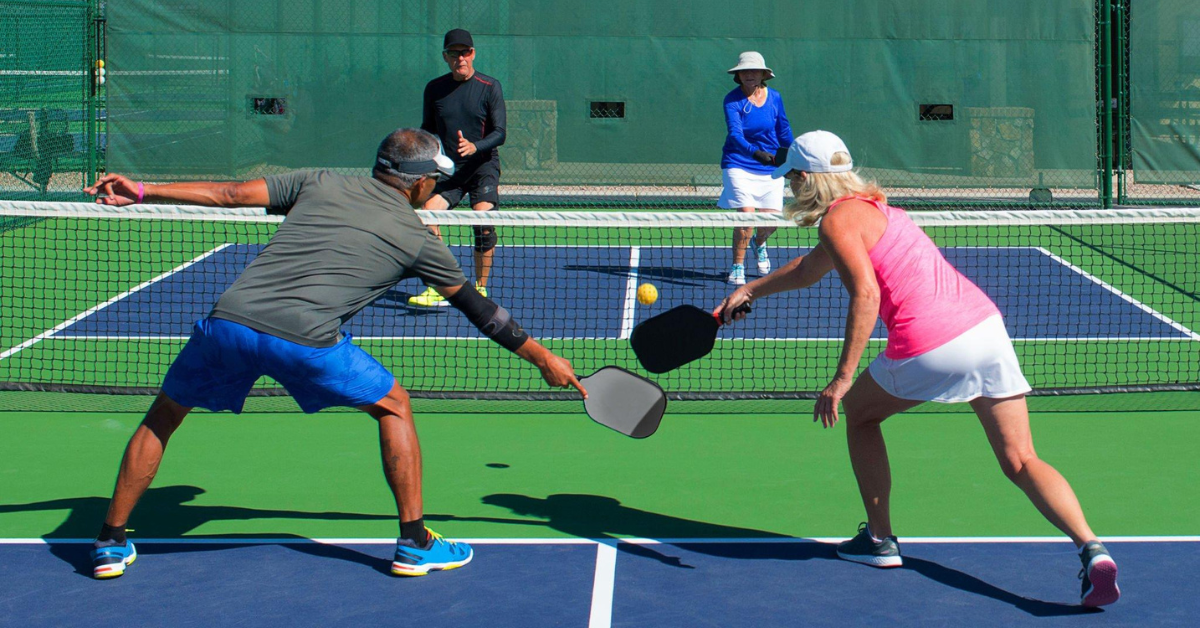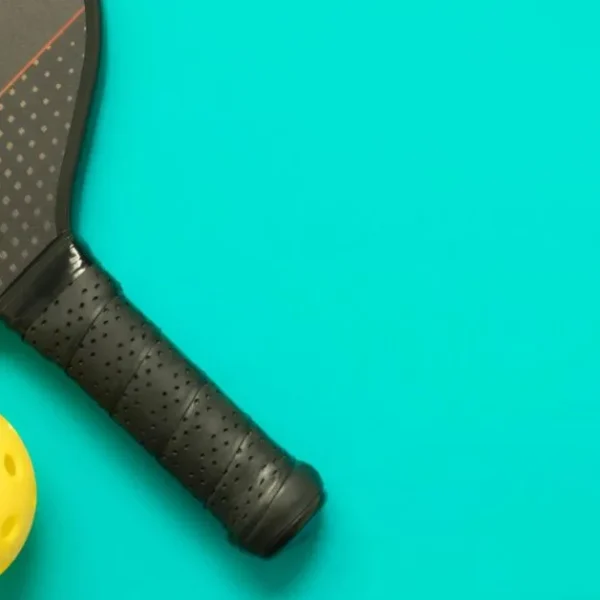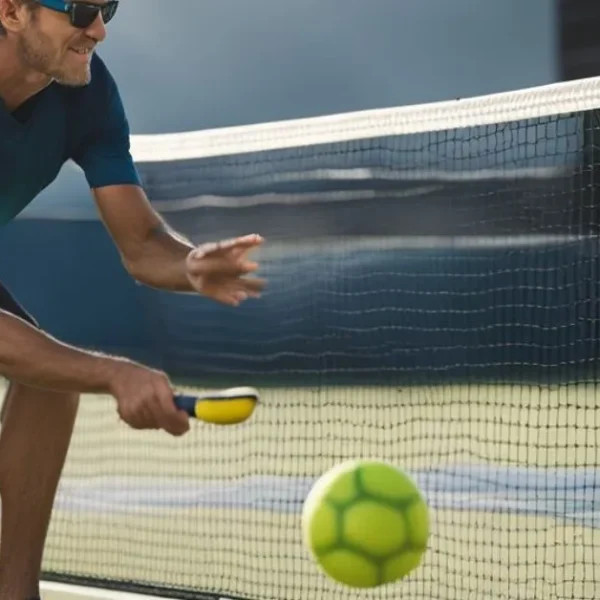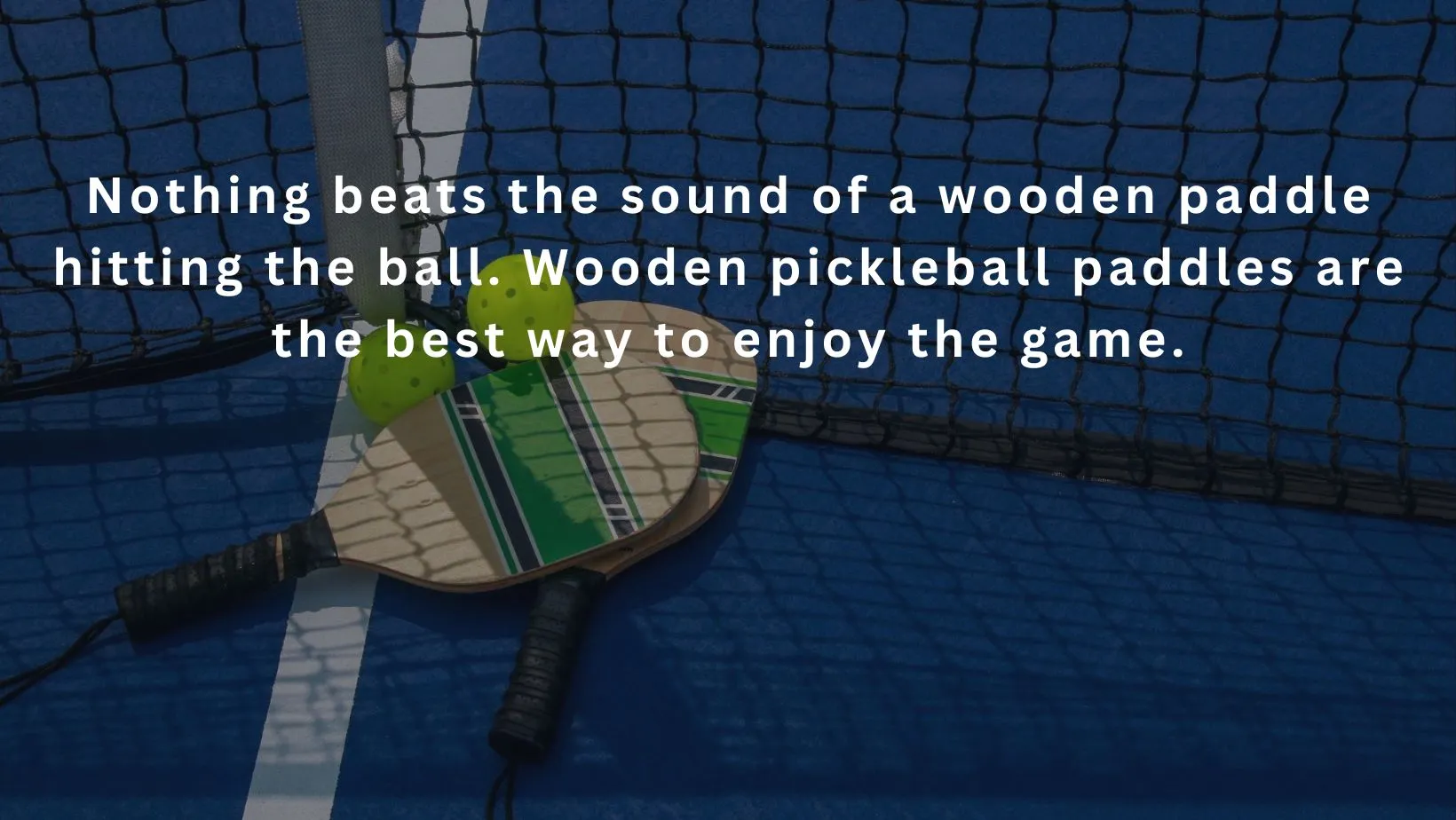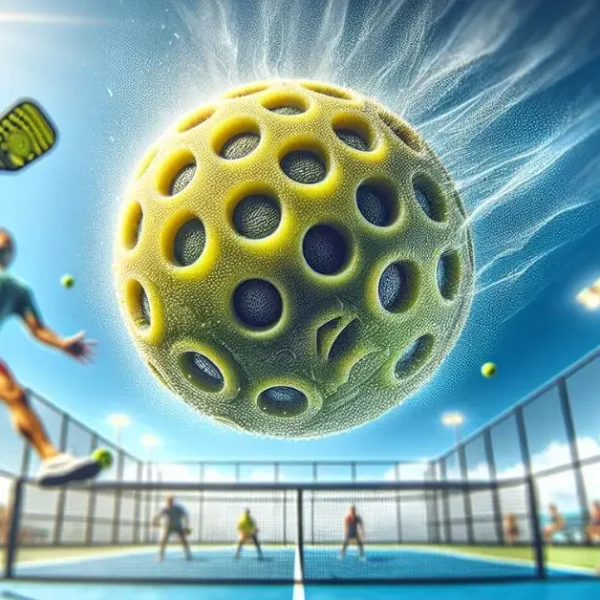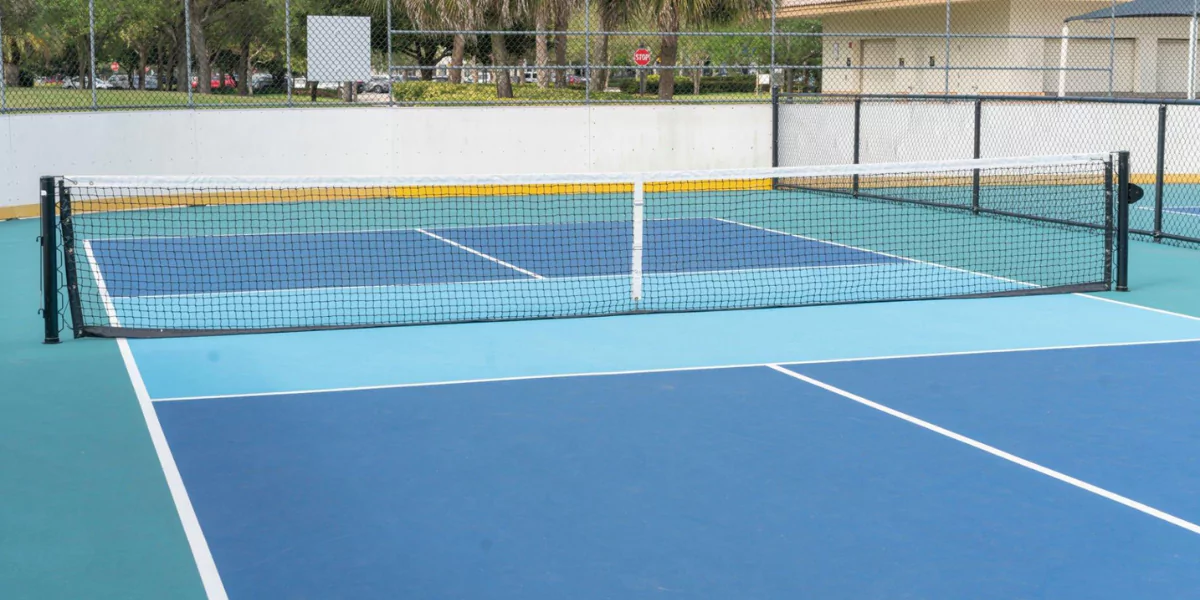Pickleball Tips for Doubles
Pickleball can be played as singles or doubles, but most players prefer to play doubles because it is more dynamic and strategic. Doubles pickleball requires teamwork, communication, and coordination between partners, as well as a good understanding of the rules, techniques, and strategies of the game.
If you are new to pickleball or want to improve your doubles game, you might be wondering what are some of the best tips and tricks to play smarter and win more games. In this article, we will share with you 10 main pickleball tips for doubles that will help you take your game to the next level. We will also answer some frequently asked questions about pickleball doubles and provide some resources for further learning.
1. Avoid Toeing the Baseline During Serve Returns
One of the most common mistakes that beginners make in pickleball doubles is standing too close to the baseline when returning serves. This can lead to several problems, such as:
- Hitting the ball out of bounds or into the net because of the lack of time and space to react.
- Getting jammed by a fast or deep serve that bounces high and forces you to hit a weak return.
- Missing the opportunity to move forward and gain an offensive position at the non-volley line.
To avoid these problems, you should stand a few feet behind the baseline when returning serves. This will give you more time and space to see the ball, adjust your footwork, and hit a controlled return. You should also aim to return the serve as deep as possible, preferably near the baseline of your opponents. This will prevent them from moving forward and hitting an easy third shot.
2. Shake ‘n Bake
Shake ‘n bake is a popular pickleball doubles strategy that involves one partner hitting a hard shot at one of the opponents while the other partner moves forward to poach any weak return. The name comes from the motion of shaking the paddle before hitting the ball and baking the opponent with a fast shot.
Shake ‘n bake is an effective way to put pressure on your opponents and create opportunities for winning points. However, it requires good timing, coordination, and communication between partners. Here are some tips on how to execute shake ‘n bake successfully:
- Choose the right moment to use shake ‘n bake. You don’t want to use it too often or too predictably, as your opponents might anticipate it and counter it. A good time to use it is when you have a clear advantage in the rally, such as when your opponents are out of position or hitting weak shots.
- Communicate with your partner before using shake ‘n bake. You need to let your partner know that you are going to hit a hard shot and that he or she should move forward to poach. You can use verbal cues, such as “shake” or “go”, or non-verbal cues, such as eye contact or nodding.
- Hit a hard shot at one of your opponents, preferably at their feet or body. You want to make them hit a weak return that your partner can easily poach. Avoid hitting cross-court shots, as they might expose your side of the court for a counterattack.
- Move forward with your partner after hitting the hard shot. You want to get to the non-volley line as quickly as possible and cover any gaps in your court. Be ready to hit any ball that comes back to you or back up your partner if he or she misses the poach.
3. Go for Your Opponent’s Feet
One of the best places to aim your shots in pickleball doubles is at your opponent’s feet. This is because hitting at their feet will force them to bend down and hit an awkward shot that will likely be weak or out of bounds. It will also prevent them from hitting an offensive shot that might put you in trouble.
Hitting at your opponent’s feet is especially effective when they are at the non-volley line or moving forward. This is because they will have less time and space to react and adjust their paddle angle. However, you can also use this strategy when they are at the baseline or mid-court, as long as you hit with enough pace and accuracy.
To hit at your opponent’s feet, you need to have good control over your paddle angle and swing speed. You want to hit with a slightly downward trajectory that will make the ball bounce low and fast near their feet. You also want to vary your shots between forehand and backhand sides, as well as between cross-court and down-the-line directions.
4. Begin Incorporating More Drop Shots into Your Game
A drop shot is a soft shot that lands near the non-volley line of your opponent’s court. It is one of the most important shots in pickleball doubles, as it allows you to transition from defense to offense and gain control of the net.
A drop shot is usually used as a third shot, which is the shot that follows the serve and the return of serve. The purpose of the drop shot is to neutralize your opponent’s advantage after they return your serve and to give you and your partner time to move forward to the non-volley line.
To hit a good drop shot, you need to have a soft touch and a smooth swing. You want to hit the ball with a slightly open paddle face and a gentle swing that will make the ball clear the net by a few inches and land near the non-volley line. You also want to hit the ball with some backspin or underspin, which will make it bounce low and slow.
You can hit a drop shot from any position on the court, but it is easier to hit it from near the baseline or mid-court. You can also hit a drop shot from either your forehand or backhand side, as well as from either cross-court or down-the-line direction.
5. Practice Patience and Positivity
Pickleball doubles is a game of patience and positivity. You need to be patient enough to wait for the right opportunity to attack and win the point, and positive enough to encourage your partner and overcome any mistakes or setbacks.
Patience is important because pickleball doubles involves a lot of long rallies and exchanges at the net. You don’t want to rush or force your shots, as you might end up hitting errors or giving your opponents easy shots. Instead, you want to keep the ball in play and look for openings in your opponent’s court or weaknesses in their game.
Positivity is important because pickleball doubles is a team sport that requires good chemistry and communication between partners. You don’t want to blame or criticize your partner for any mistakes or losses, as this might affect their confidence and performance. Instead, you want to praise or compliment your partner for any good shots or wins, as this might boost their morale and motivation.
To practice patience and positivity, you need to have a good mindset and attitude. You need to focus on the process rather than the outcome, enjoy the game rather than stress over it, and learn from your mistakes rather than dwell on them. You also need to communicate with your partner effectively, using verbal or non-verbal cues, such as words, gestures, or eye contact.
6. Don’t Stand Too Close to the Baseline when Returning Serves
Another common mistake that beginners make in pickleball doubles is standing too close to the baseline when returning serves. This can lead to several problems, such as:
- Hitting the ball out of bounds or into the net because of the lack of time and space to react.
- Getting jammed by a fast or deep serve that bounces high and forces you to hit a weak return.
- Missing the opportunity to move forward and gain an offensive position at the non-volley line.
To avoid these problems, you should stand a few feet behind the baseline when returning serves. This will give you more time and space to see the ball, adjust your footwork, and hit a controlled return. You should also aim to return the serve as deep as possible, preferably near the baseline of your opponents. This will prevent them from moving forward and hitting an easy third shot.
7. Return the Serve as Deep as Possible
One of the most important skills in pickleball doubles is returning the serve as deep as possible. This is because hitting a deep return will give you several advantages, such as:
- Keeping your opponents back at the baseline or mid-court, where they have less control and options.
- Making them hit a difficult third shot that might be weak or out of bounds.
- Giving you and your partner time to move forward and get to the non-volley line.
To hit a deep return, you need to have good control over your paddle angle and swing speed. You want to hit the ball with a slightly closed paddle face and a moderate swing that will make the ball clear the net by a few feet and land near the baseline of your opponents. You also want to hit the ball with some topspin or overspin, which will make it bounce high and fast.
You can hit a deep return from any position on the court, but it is easier to hit it from near or behind the baseline. You can also hit a deep return from either your forehand or backhand side, as well as from either cross-court or down-the-line direction.
8. Speed Ups
Speed ups are shots that are hit with more pace and power than usual. They are used to surprise your opponents and put them on defense. Speed ups are usually used when you have an advantage in the rally, such as when your opponents are out of position or hitting weak shots.
Speed ups can be hit from any position on the court, but they are more effective when you are at the non-volley line or close to it. You can also hit speed ups from either your forehand or backhand side, as well as from either cross-court or down-the-line direction.
To hit a speed up, you need to have good timing and accuracy. You want to hit the ball with a flat paddle face and a fast swing that will make the ball travel low and fast over the net. You also want to aim at your opponent’s feet or body, or at any gaps in their court.
9. Move Together
Moving together is a key principle in pickleball doubles that means that you and your partner should move in sync and maintain a balanced position on the court. Moving together will help you cover more area, avoid confusion, and create more angles.
Moving together is especially important when you are transitioning from the baseline to the non-volley line, or when you are switching sides with your partner. You don’t want to leave any gaps in your court that your opponents can exploit, or overlap with your partner and cause interference.
To move together, you need to have good communication and coordination with your partner. You need to use verbal or non-verbal cues, such as words, gestures, or eye contact, to signal your intentions and actions. You also need to adjust your position according to your partner’s position, the ball’s position, and your opponent’s position.
10. Get to the Non-Volley Line after the Return-of-Serve
Getting to the non-volley line after the return-of-serve is one of the most important goals in pickleball doubles. This is because getting to the non-volley line will give you several advantages, such as:
- Having more control and options over your shots.
- Putting pressure on your opponents and forcing them to hit difficult shots.
- Creating more angles and opportunities to win the point.
To get to the non-volley line after the return-of-serve, you need to have a good return of serve and a good transition game. You need to hit a deep return of serve that will keep your opponents back and give you time to move forward. You also need to hit a good third shot drop or drive that will allow you to get to the non-volley line without being attacked.
You can get to the non-volley line after the return-of-serve from any position on the court, but it is easier to do it from near or behind the baseline. You can also get to the non-volley line after the return-of-serve from either your forehand or backhand side, as well as from either cross-court or down-the-line direction.
Final Words
Pickleball doubles is a fun and challenging sport to play that requires skill, strategy, and teamwork. By following these 10 main pickleball tips for doubles, you will be able to improve your game and enjoy it more. Remember to practice patience and positivity, communicate and coordinate with your partner, and use the right shots and techniques for each situation.
We hope you found this article helpful and informative. If you have any questions or feedback, please feel free to leave a comment below. If you want to learn more about pickleball doubles, we recommend checking out these resources:
FAQs
Why Should Anyone Watch Professional Pickleball Players?
Watching professional pickleball players can be very beneficial for anyone who wants to improve their own game or simply enjoy the sport. Here are some reasons why anyone should watch professional pickleball players:
- You can learn from their skills, techniques, and strategies. You can observe how they execute different shots, such as serves, returns, drops, drives, volleys, lobs, dinks, speed ups, etc. You can also see how they use different strategies, such as shake ‘n bake, stacking, switching sides, etc.
- You can get inspired by their passion, dedication, and performance. You can witness how they play with intensity, focus, and enthusiasm. You can also appreciate how they overcome challenges, cope with pressure, and celebrate victories.
- You can have fun and entertainment by watching exciting matches and rallies. You can enjoy the thrill of watching close games and points that are decided by inches or seconds. You can also admire the beauty of watching graceful movements and shots that are executed with precision and power.
What is pickleball’s double bounce rule?
Pickleball’s double bounce rule is a rule that states that each team must play their first shot off of the bounce. This means that after the serve is hit by one team, it must bounce once before being returned by the other team. Similarly, after the return of serve is hit by the other team, it must bounce once before being played by the serving team. After these two bounces have occurred, the ball can be either volleyed (hit in the air) or played off the bounce until the point is over.
The purpose of the double bounce rule is to prevent the serving team from gaining an unfair advantage by rushing to the net and volleying the return of serve. The double bounce rule also adds an element of strategy and skill to the game, as players have to decide when to volley and when to let the ball bounce.
Why placement over power matters more in pickleball doubles
Placement over power means that hitting the ball to the right spot is more important than hitting the ball hard. This is especially true in pickleball doubles, where hitting the ball hard can be counterproductive or risky. Here are some reasons why placement over power matters more in pickleball doubles:
- Hitting the ball hard can give your opponents more time and momentum to react and return your shot. This is because hitting the ball hard will make it travel faster and bounce higher, which will allow your opponents to use your pace and angle against you.
- Hitting the ball hard can expose your court for a counterattack or a lob. This is because hitting the ball hard will make you lose control and balance, which will leave gaps in your court that your opponents can exploit. It will also make you vulnerable to lobs, as you will have less time and space to recover and defend.
- Hitting the ball hard can increase your chances of hitting errors or out of bounds. This is because hitting the ball hard will make it harder to control and aim, which will result in more mistakes or misses. It will also make it harder to clear the net, which will result in more net faults.
On the other hand, hitting the ball with placement can give you several advantages, such as:
- Hitting the ball with placement can make your opponents hit weak or out of bounds shots. This is because hitting the ball with placement will make it harder for your opponents to reach and return your shot. It will also make them hit awkward or uncomfortable shots that might be weak or out of bounds.
- Hitting the ball with placement can create opportunities for winning points or attacking shots. This is because hitting the ball with placement will put your opponents on defense and force them to hit difficult shots. It will also create openings in their court that you can exploit with offensive shots, such as volleys, speed ups, or lobs.
- Hitting the ball with placement can reduce your chances of hitting errors or out of bounds. This is because hitting the ball with placement will make it easier to control and aim, which will result in fewer mistakes or misses. It will also make it easier to clear the net, which will result in fewer net faults.
Which is more physically demanding: doubles or singles pickleball?
Both doubles and singles pickleball are physically demanding in different ways. However, singles pickleball is generally considered to be more physically demanding than doubles pickleball for several reasons, such as:
- Singles pickleball requires more running and movement than doubles pickleball. This is because singles players have to cover more area on the court by themselves, while doubles players can share the workload with their partners.
- Singles pickleball requires more stamina and endurance than doubles pickleball. This is because singles players have to play longer rallies and points than doubles players, who can end points quicker with offensive shots or strategies.
- Singles pickleball requires more strength and power than doubles pickleball. This is because singles players have to hit harder shots than doubles players, who can rely more on soft shots or placement.
However, this does not mean that doubles pickleball is easy or less challenging than singles pickleball. Doubles pickleball also requires a lot of physical skills and abilities, such as:
- Doubles pickleball requires more coordination and agility than singles pickleball. This is because doubles players have to move in sync and avoid collisions with their partners, while singles players have more freedom and space on the court.
- Doubles pickleball requires more reflexes and reaction time than singles pickleball. This is because doubles players have to deal with faster and closer shots than singles players, who have more time and distance to react and adjust.
- Doubles pickleball requires more finesse and touch than singles pickleball. This is because doubles players have to hit softer shots than singles players, who can use more pace and power.
What are the kitchen rules for pickleball doubles?
The kitchen rules for pickleball doubles are rules that govern how players can enter and play in the non-volley zone, which is also known as the kitchen. The non-volley zone is a 7-foot area on both sides of the net that extends from the baseline to the non-volley line.
The kitchen rules for pickleball doubles are as follows:
- Players cannot volley (hit in the air) any ball that is in or over the non-volley zone. They must let the ball bounce before playing it.
- Players cannot enter the non-volley zone unless they are playing a ball that has bounced. They must exit the non-volley zone as soon as possible after playing the ball.
- Players cannot touch the non-volley line or the non-volley zone with any part of their body or paddle while volleying the ball. They must have both feet behind the non-volley line before and after volleying the ball.
- Players can touch the non-volley line or the non-volley zone with any part of their body or paddle while playing a ball that has bounced, as long as they do not touch it before or while hitting the ball.
The kitchen rules for pickleball doubles are designed to prevent players from gaining an unfair advantage by volleying the ball close to the net and reducing their opponent’s reaction time. The kitchen rules also add an element of strategy and skill to the game, as players have to decide when to enter and exit the non-volley zone and how to play different shots in and around it.

